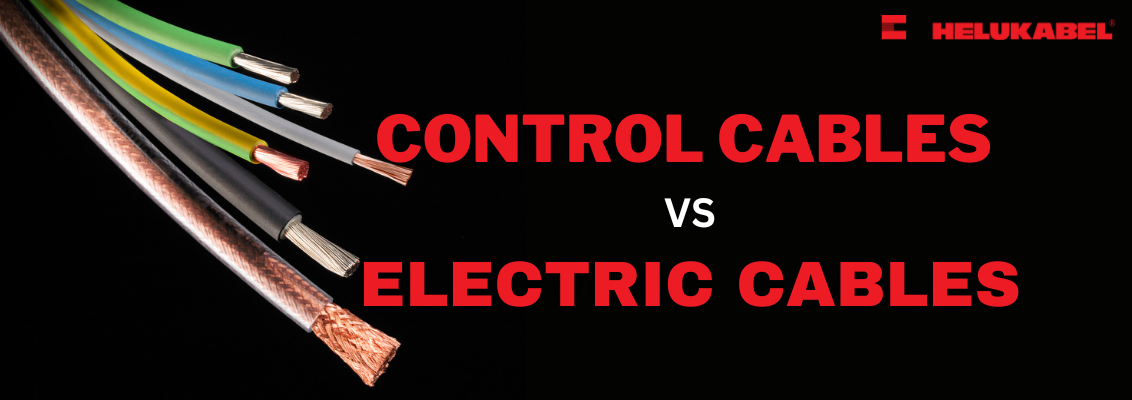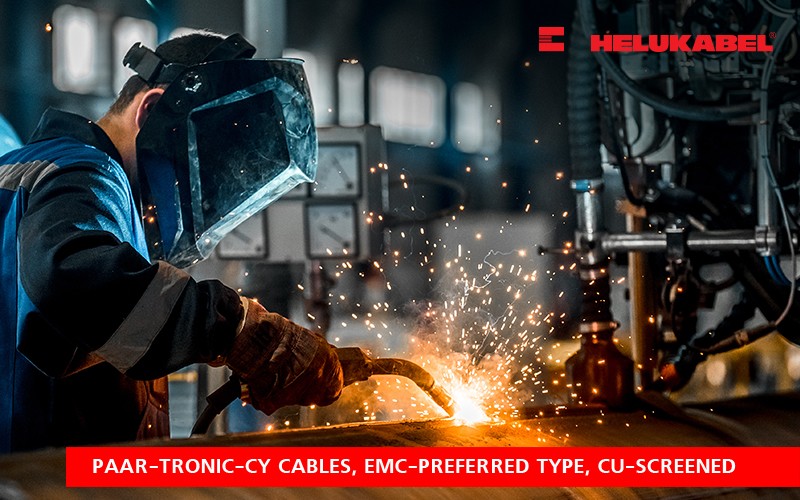What are the differences between control cables and electric cables?
Nowadays, when choosing control and electronic cables, we need to distinguish the features and differences between these two types of cables. Understanding the nature of the two cable lines above will save time in product selection and make sure you can choose the right product for your project.

What are electric cables?
Electric cables are electric conductors that help transmit electricity over a wide area. These cables can appear in daily life applications such as electricly connected appliances in the home (TV, air conditioner, washing machine...).
The nominal voltage of electric cables is 0.6/1kV.
What are control cables?
Control cables are specialized cables, used to transmit power and control functions in the machine system to remote control converters without using electromagnetic waves.
Control cables are used in industry, factory automation, robotic applications, drag-and-drop applications, cranes, airports, and railways. In addition, this type of control cable is applied in building systems, such as fire alarm systems, fire fighting systems, temperature measurement systems, sound systems, and many other applications.
The highlight of the control cable is its ability to work well in harsh environments, requiring vibrations, high temperatures, grease, cleaning chemicals, etc.
Control cables & Electric cables
Electric cables and control cables both perform the function of transferring energy from one place to another, from one device to another.
OTHER POSTS >>> PLASTIC DRAG CHAINS, ARE THEY REALLY GOOD?
| Electric cables | Control cables | |
| Cable structure | The basic structure includes a conductive core, insulation, and sheath. | There is a more complex structure including a conductor core, insulation, shielding tape, armour, inner sheath, and outer sheath. |
| Softness | The conductive core of electric cables is composed of 1 or 7 small copper wires. | The conductive core of the control cable usually has 7 or more fibers, corresponding to the soft levels class 2, 5, and 6, according to IEC 60228 standard. |
| Insulation | The insulation of electric cables is usually made of PVC plastic and XLPE. | The insulation of control cables is usually made of PVC compound or PE. |
| Shield tape | The anti-interference ability of electric cables is only approximate. | The anti-interference ability of the control power cable is better. The shielding tape is usually made of tightly braided copper or tin-plated copper mesh or aluminum foil. |
| Application environment | Electric cables transmit electricity in normal conditions in life. | Control cables are used in many industrial areas, especially harsh manufacturing environments, where control cables are required to withstand high temperatures, interferences, oils, and chemical resistance. |
| Name | Electric cables are often named based on the cross-section of the wire. For example: 1.0mm2; 1.5mm2; 2.5mm2; 0.75mm2. | Control cables are also named based on the cross-section of the electric cables. Besides, control cables are also named according to the AWG index. For example: 16AWG, 18AWG… |
Through the concepts and detailed analysis of the differences between civil and control cables, we hope that you can actively choose the right products for your project.
At HELUKABEL, we provide comprehensive electric connection solutions with power cables and cable accessories, serving a wide range of industries. With a wide product portfolio, we can provide optimal solutions for your project, and for projects with special requirements for electric cable design, we can be completely responsive thanks to customized solutions. Therefore, all you need is what we have. If you are in need of more specific advice on solutions, please contact our engineering team for quick advice and support.
_any_large.jpg)
>>Find out more: 3 types of control cables for the steel industry
>>See more: Various types of control cablé from HELUKABEL



_welcome_slider.png)
